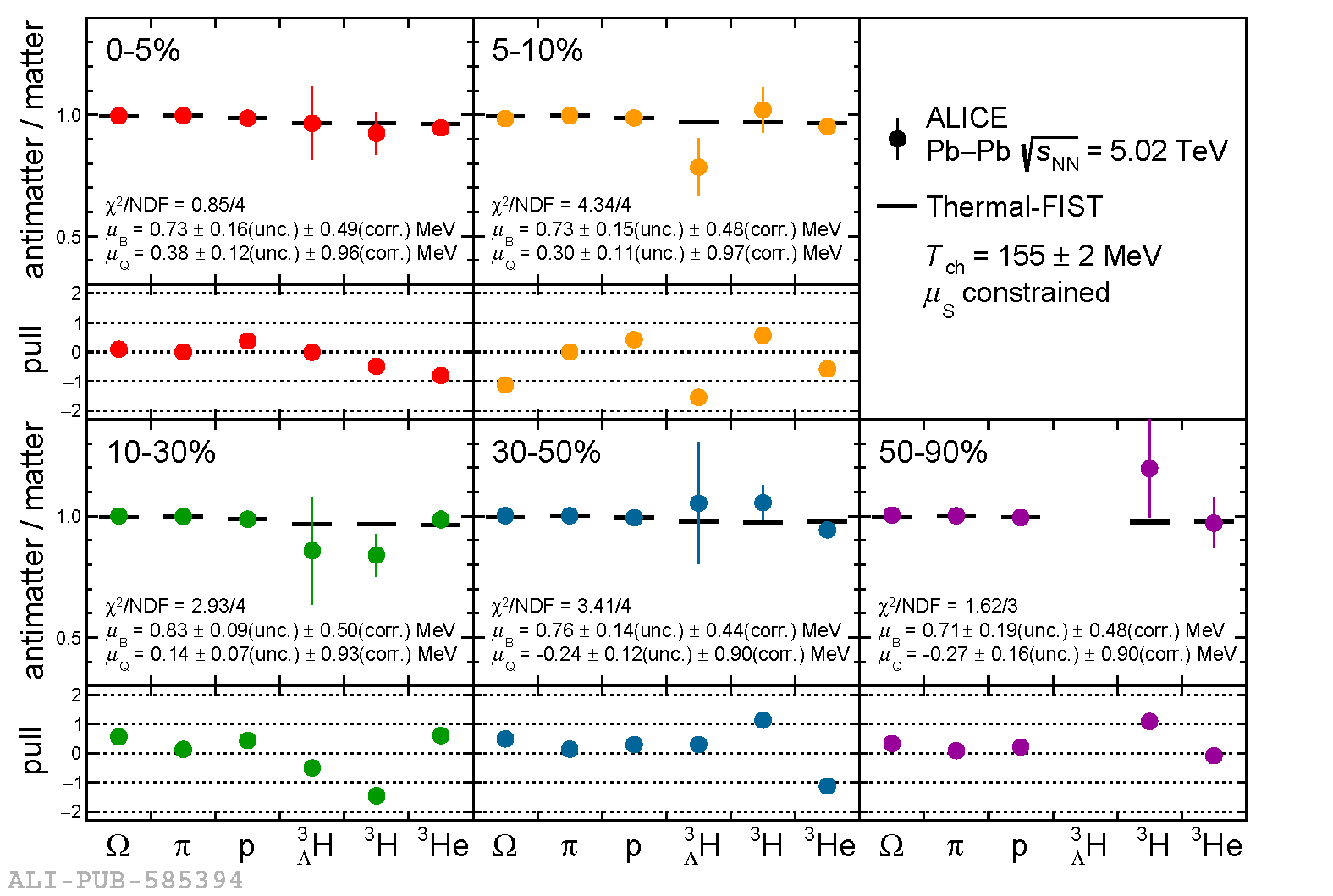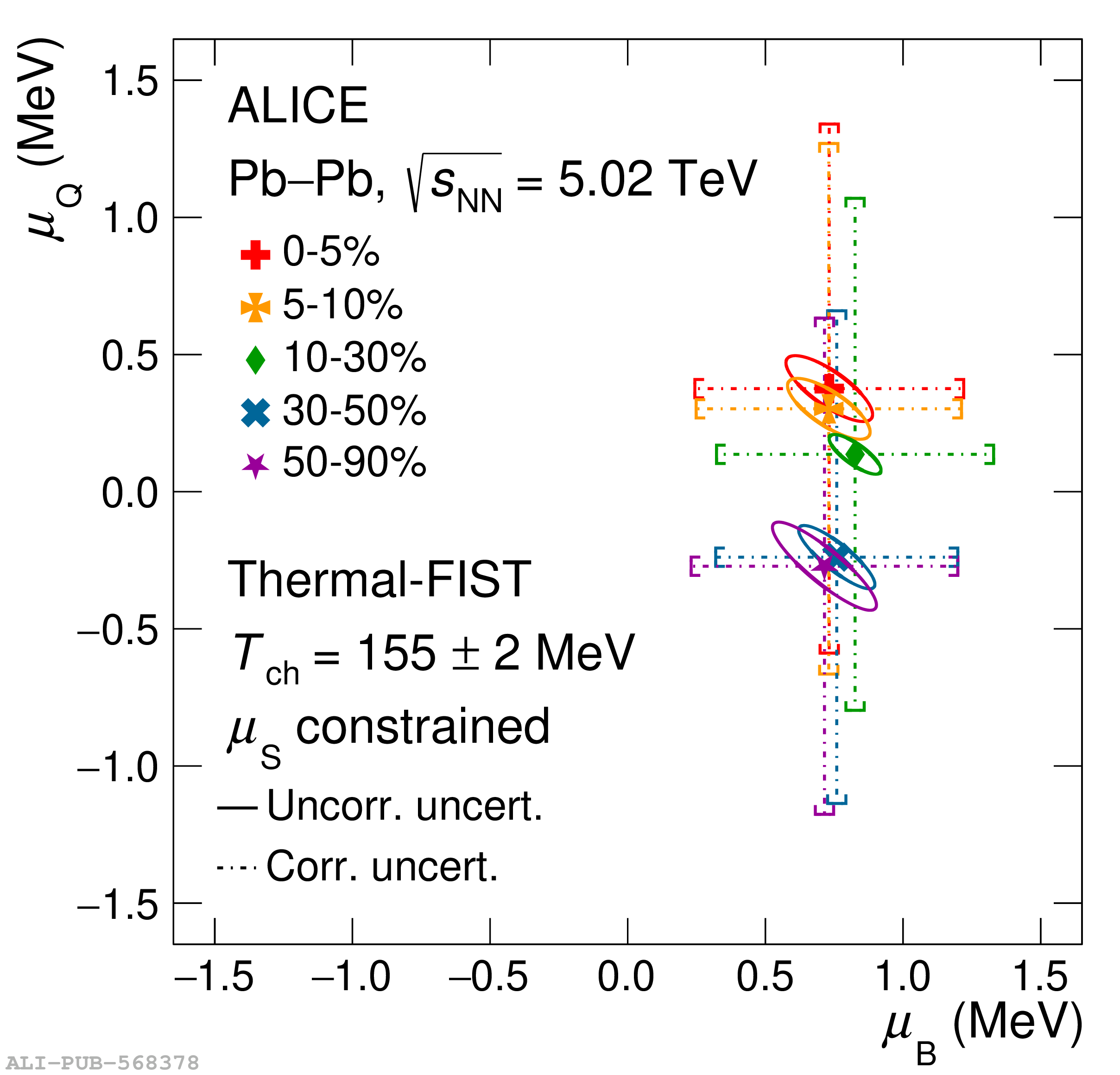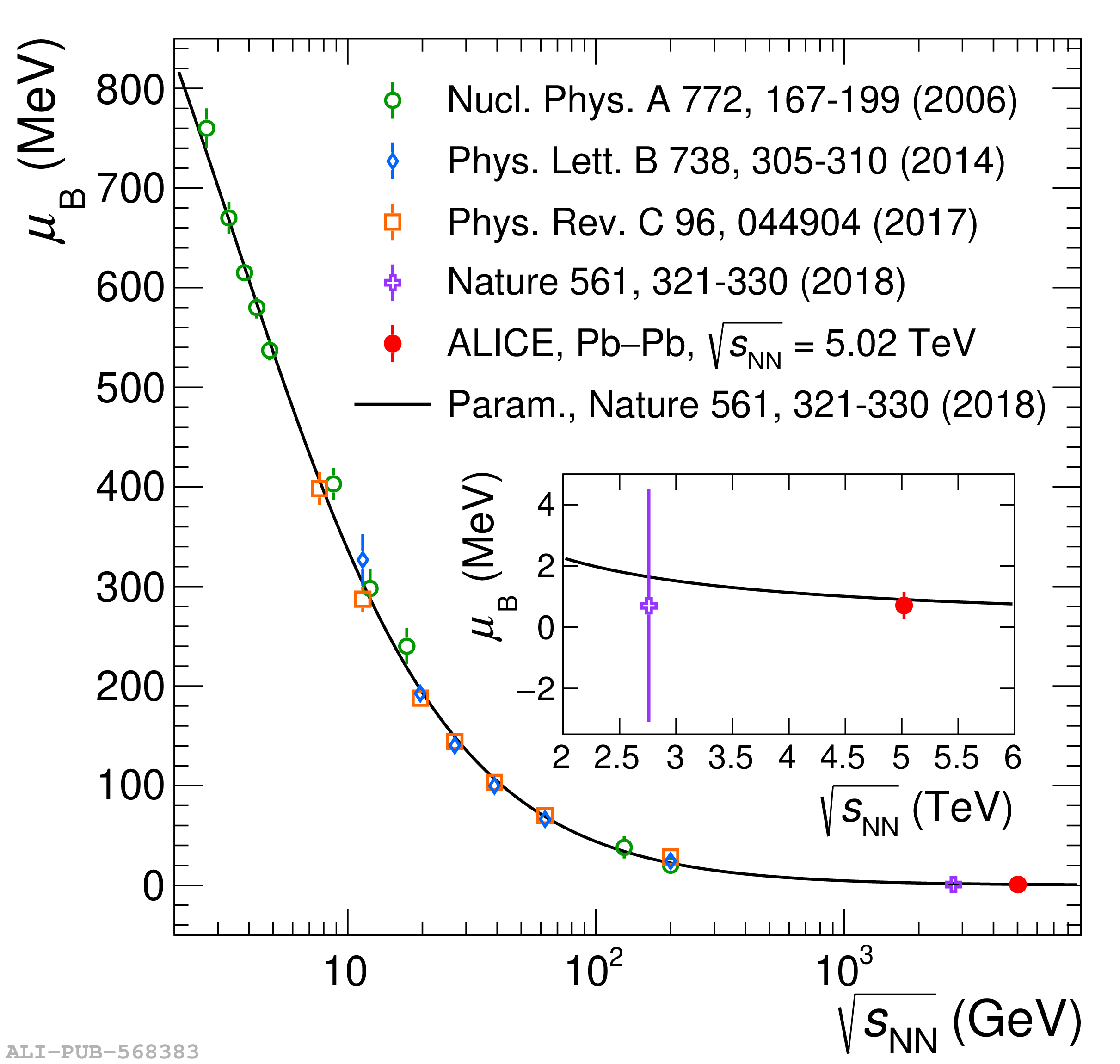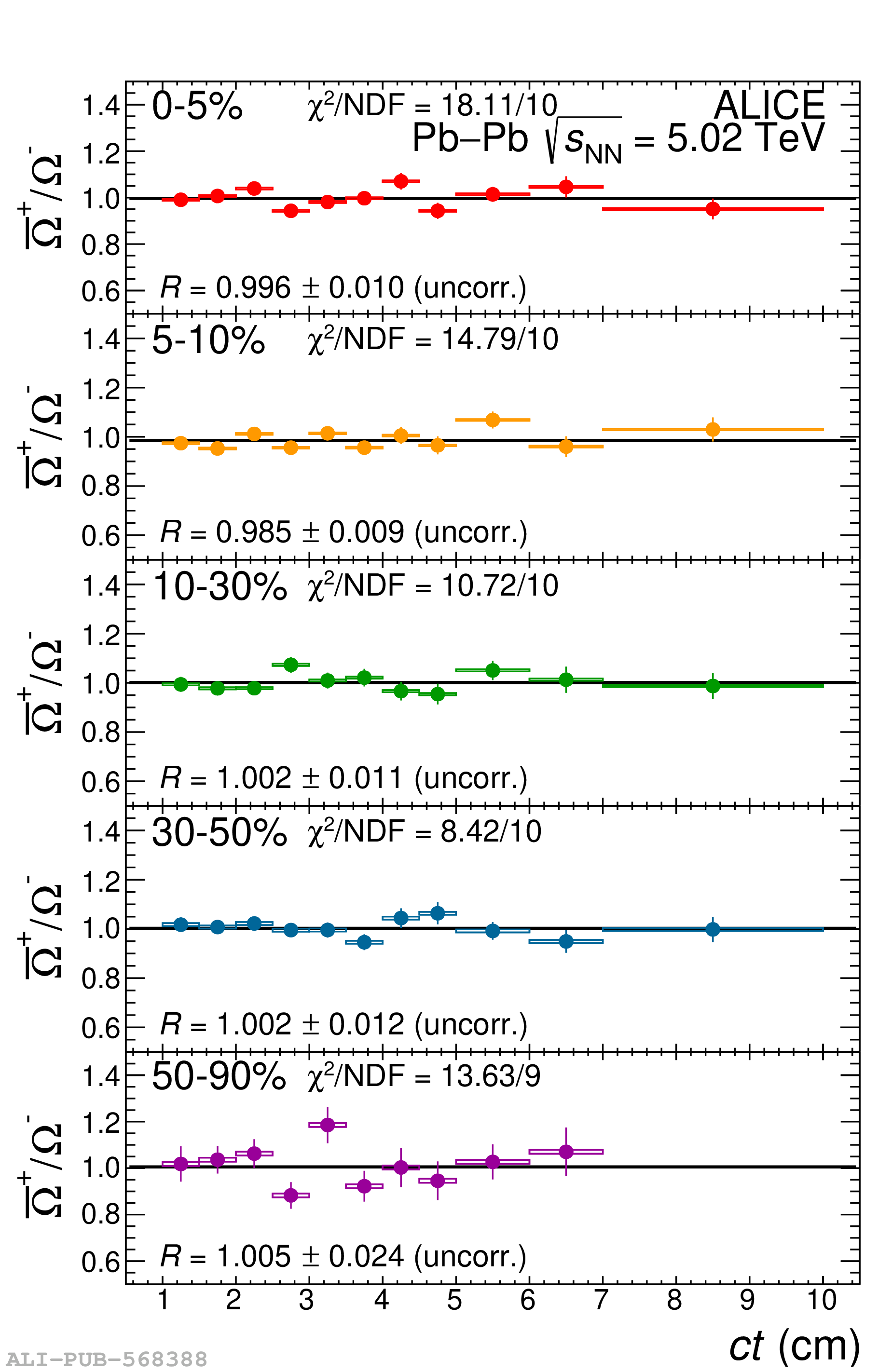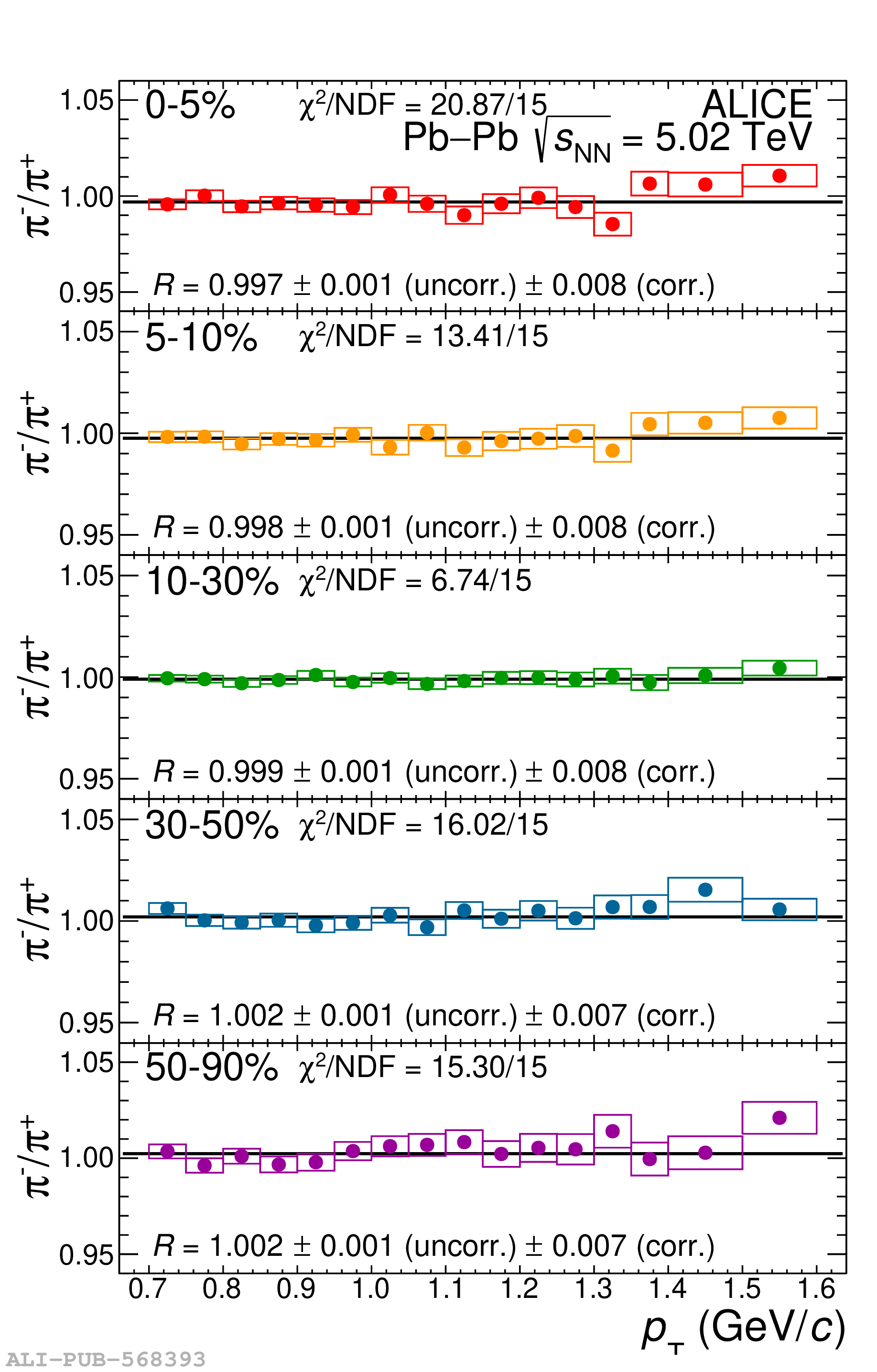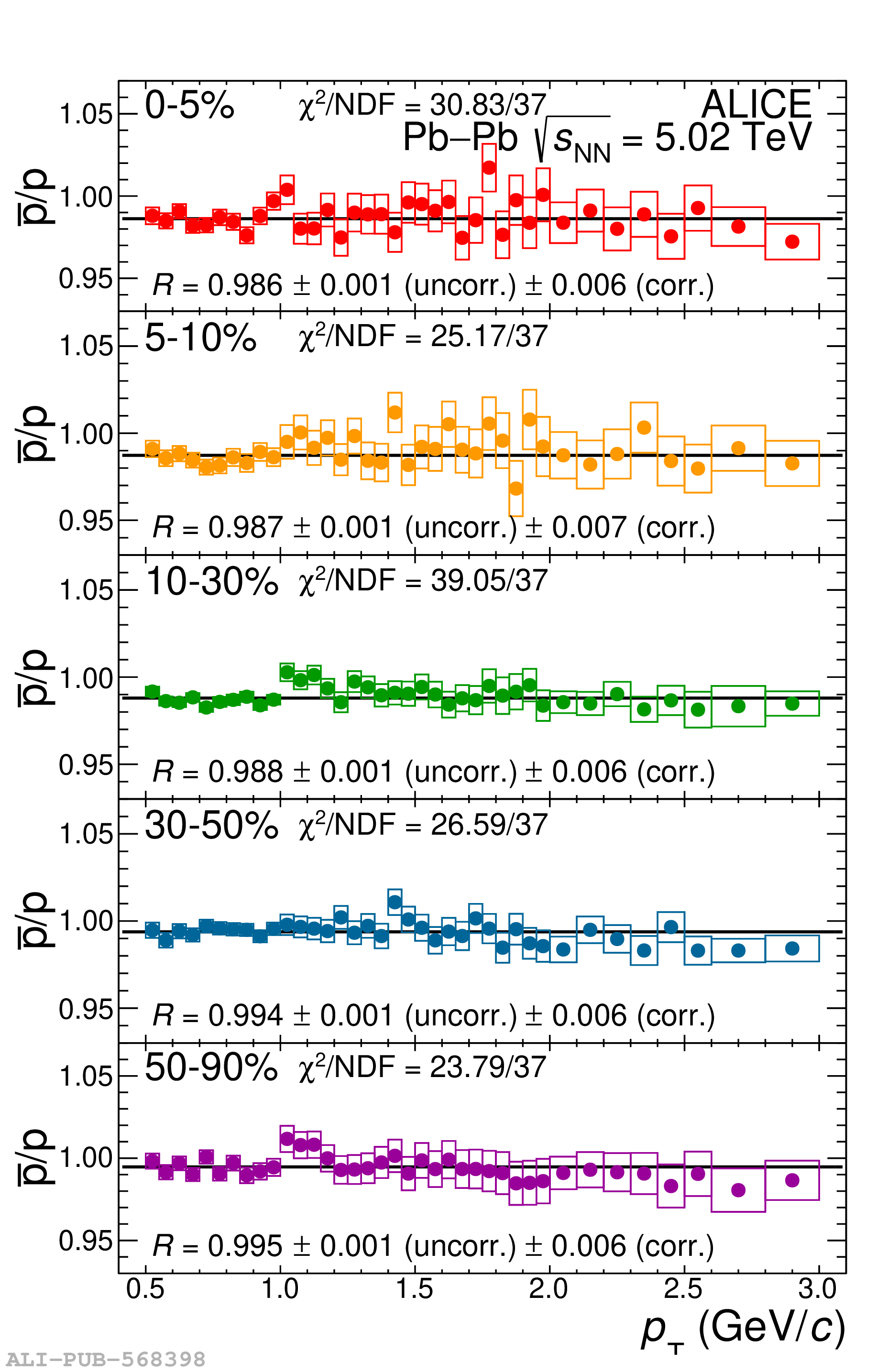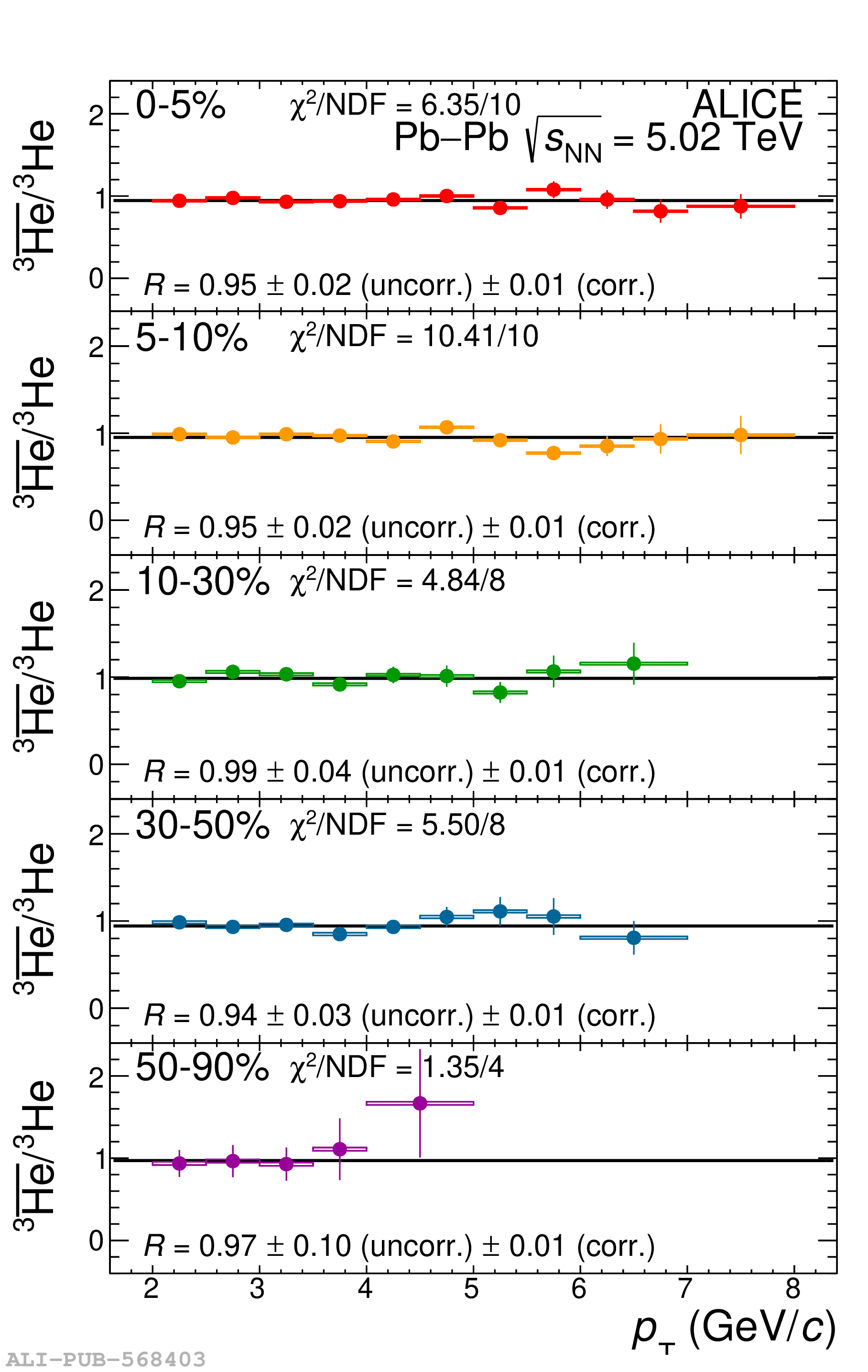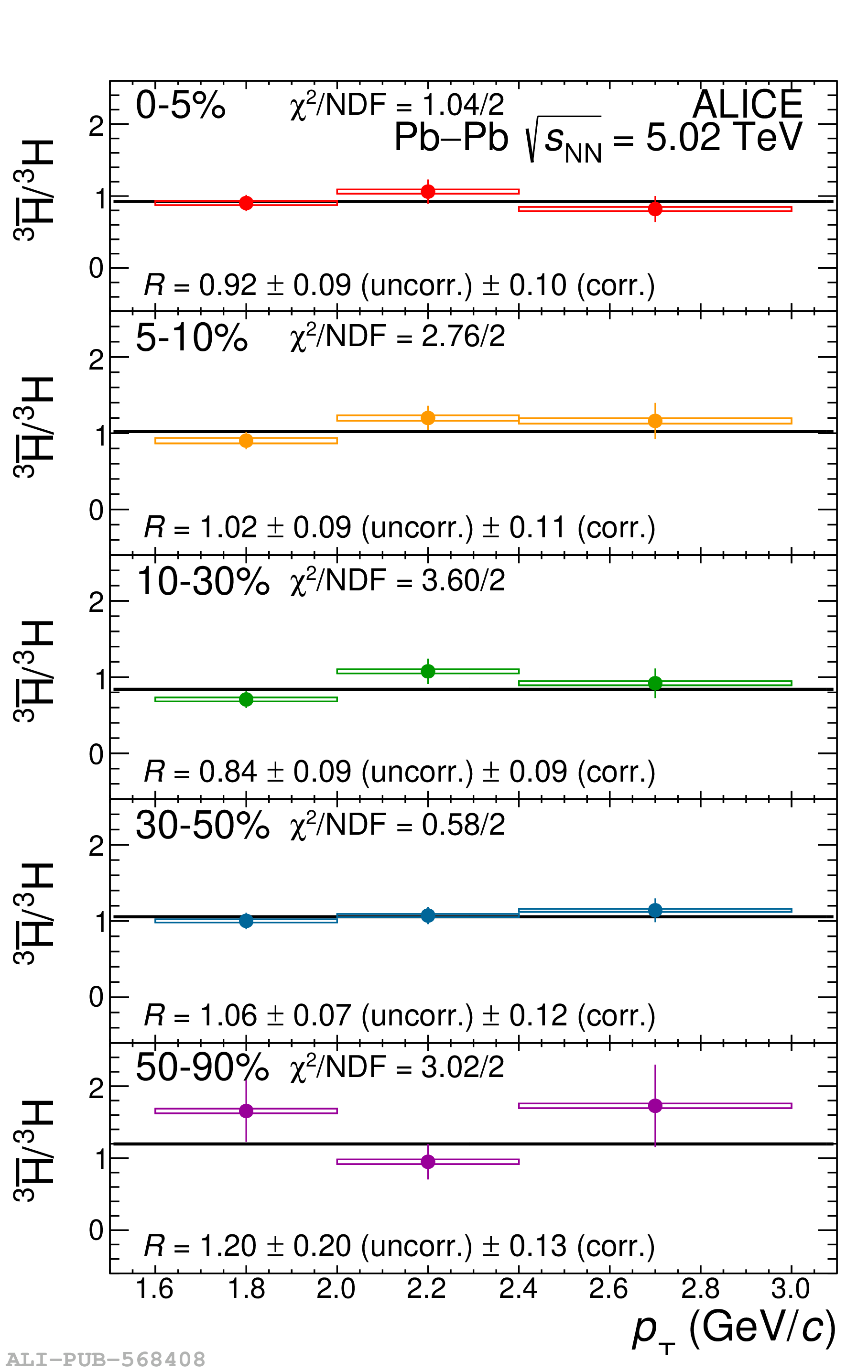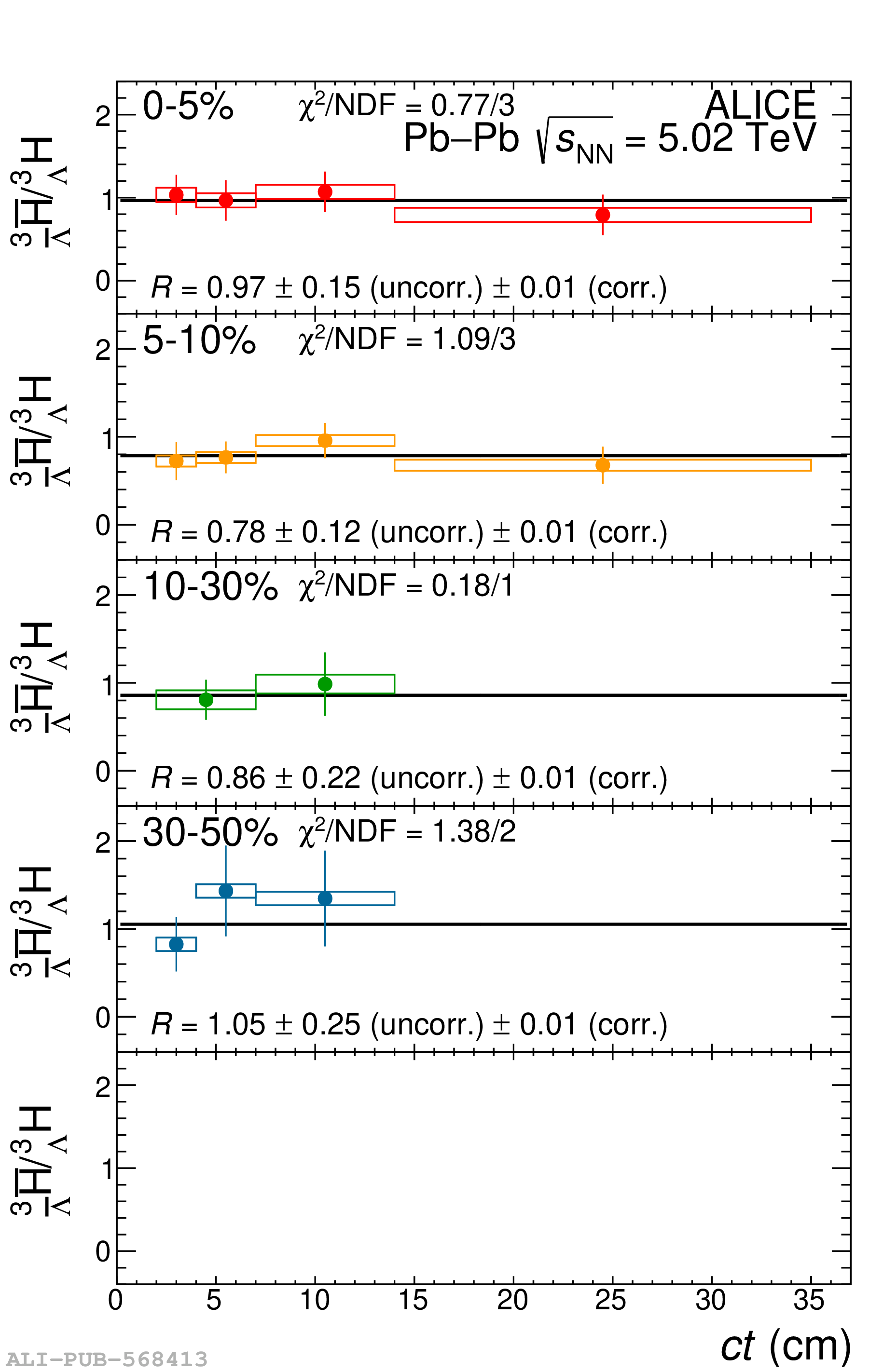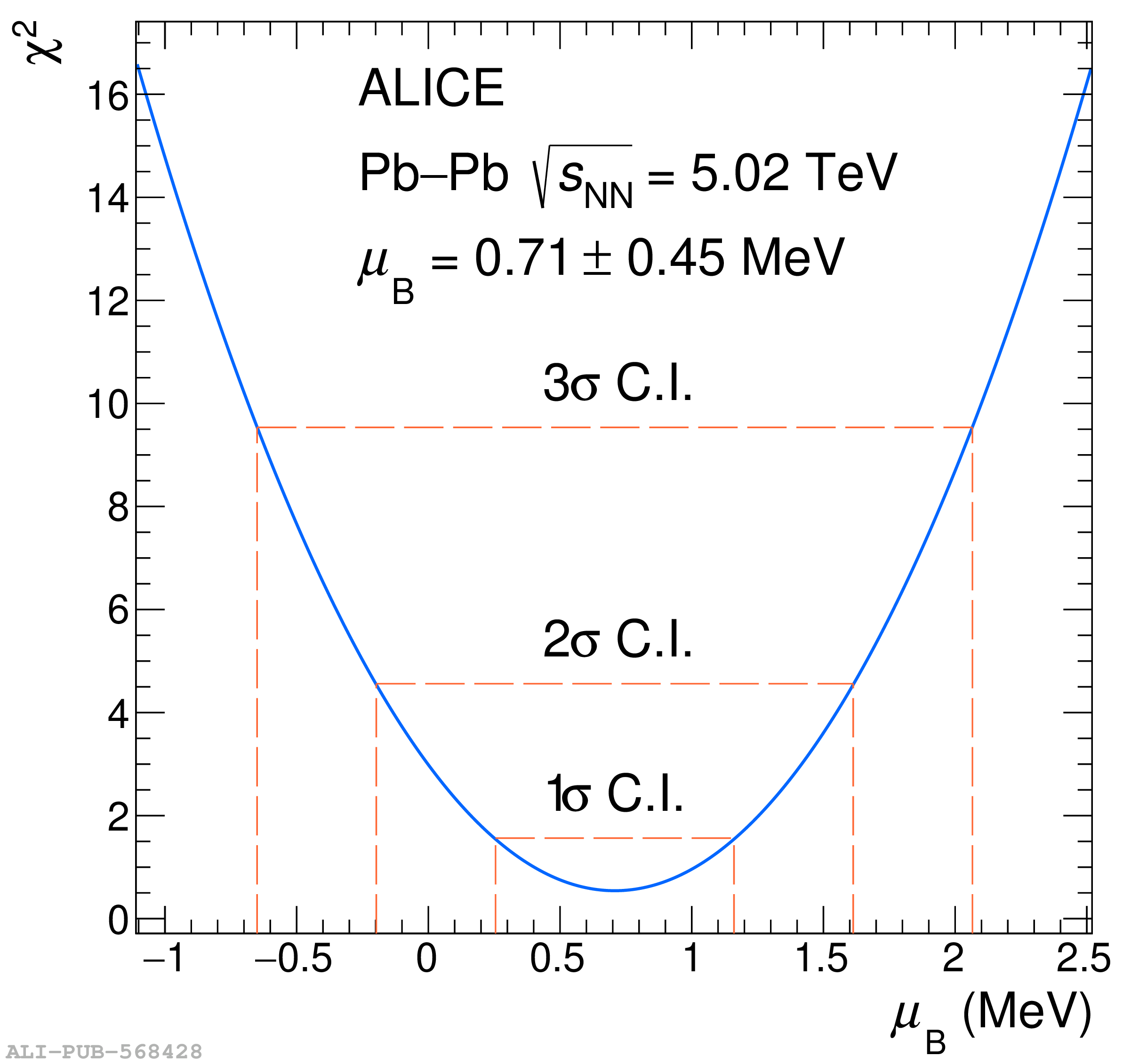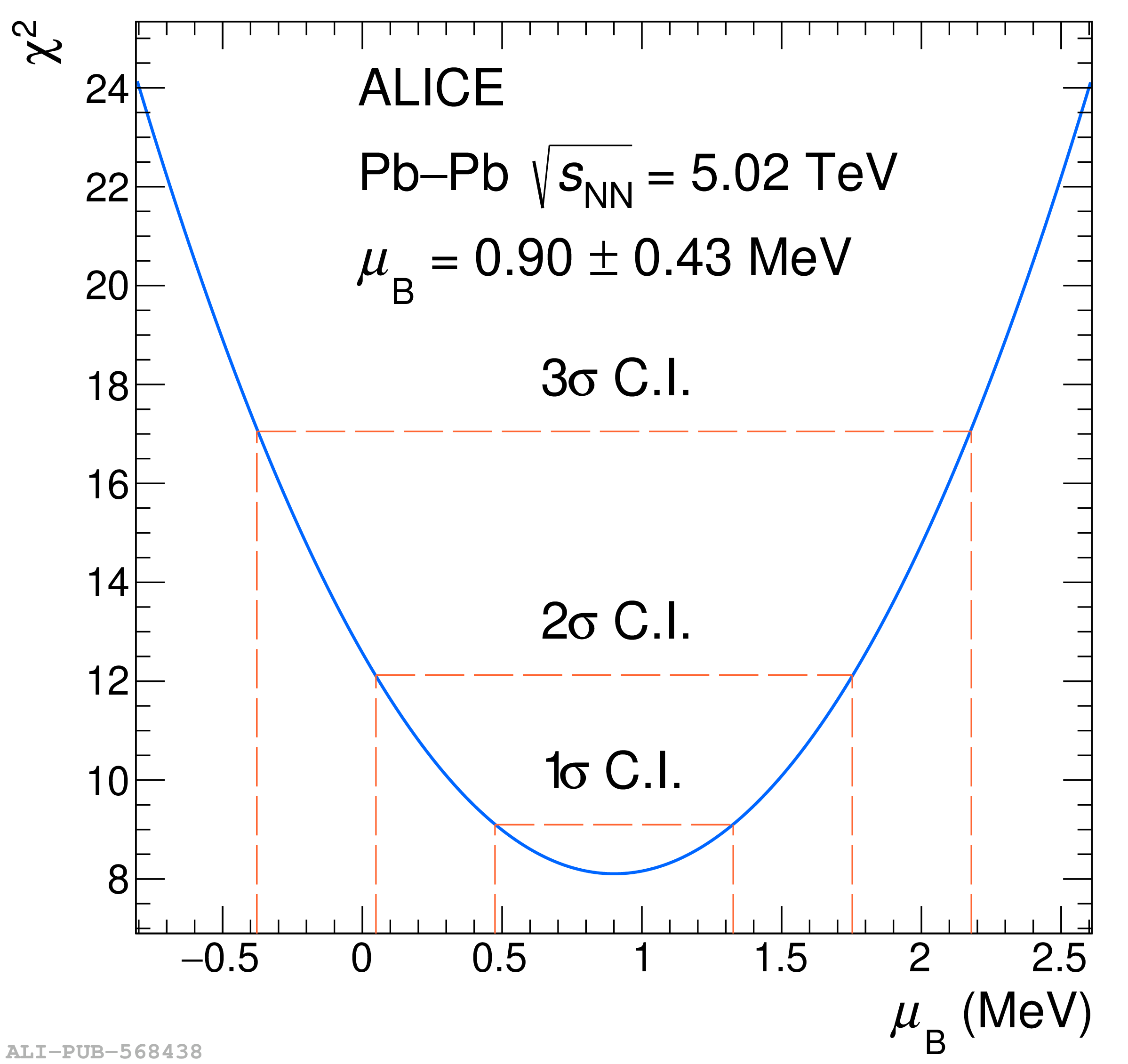This Letter presents the most precise measurement to date of the matter-antimatter imbalance at midrapidity in Pb-Pb collisions at a center-of-mass energy per nucleon pair $\sqrt{s_{\rm NN}} = 5.02$ TeV. Using the Statistical Hadronization framework, it is possible to obtain the value of the electric charge and baryon chemical potentials, $\mu_Q=-0.18\pm0.90$ MeV and $\mu_B=0.71\pm0.45$ MeV, with unprecedented precision. A centrality-differential study of the antiparticle-to-particle yield ratios of charged pions, protons, $\Omega$-baryons, and light (hyper)nuclei is performed. These results indicate that the system created in Pb-Pb collisions at the LHC is on average baryon-free and electrically neutral at midrapidity.
Phys. Rev. Lett. 133 (2024) 092301
HEP Data
e-Print: arXiv:2311.13332 | PDF | inSPIRE
CERN-EP-2023-268
Figure group

